Gel polish correction
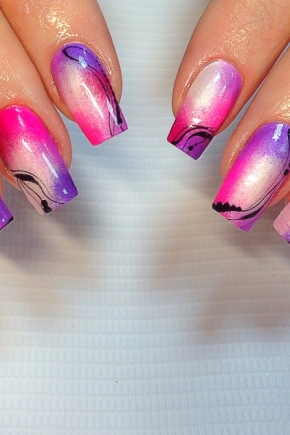
Manicure using gel polish has long been the most requested service offered in nail salons. This is due to the rich color palette and variety of textures of gel polishes, the durability and reliability of the coating, the nails do not look thick and unnatural, as when building up. With the help of gel polish, you can perform almost any design. However, when the nail grows and there is free space near the cuticle, it does not look very attractive. Then a procedure called "correction" comes to the rescue.
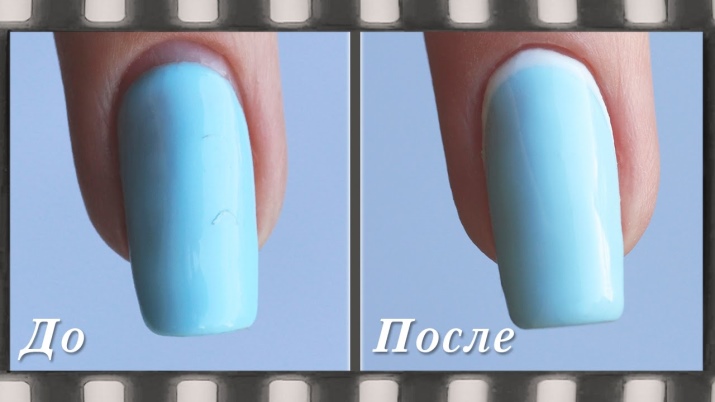
What is the procedure
First, let's clarify what gel polish is. Gel polish is a hybrid form of nail polish and gel. Unlike conventional lacquer, gel polish does not wear off the nails due to external influences (for example, washing dishes or cleaning the apartment), has a dense, uniform coating and stays on the nail plates for a very long time (up to 4 weeks). It is dried in a UV lamp.

Manicure correction using gel polish means the procedure for the complete or partial renewal of the decorative coating of the nail plate, as well as the removal of burrs, regrown cuticles and the formation of the optimal length and shape of the free edge of the nail.
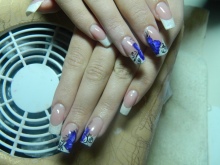

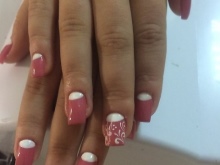
The frequency of correction depends on the speed of nail growth.

Varieties
Depending on the condition of the coating, there are two ways to carry out corrective work on gel-coated nail plates:
- No stripping
This method is usually chosen by girls with accelerated nail growth, when the coating is still absolutely intact, but the free space near the cuticle is striking and I want to correct this defect. In this case, you can leave the old gel polish on the nail, do a manicure and correct the coating by filling the bare space with a new layer of gel polish.
- Complete with color change
This type of corrective work is suitable for those who do not want to walk for a long time with the same color and design on the nails. Gel polish is completely removed, the whole range of work is carried out to perform a manicure and apply a new coating.
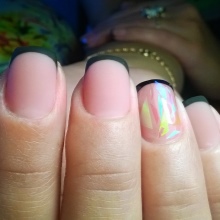
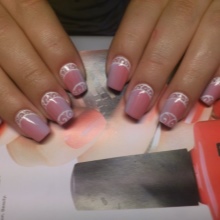

Advantages and disadvantages of each procedure
Which type of correction to choose, of course, is up to you. However, it is important to know what are the pros and cons of each procedure:
- The indisputable advantage of a manicure without removing the coating is a significant time saving. This is especially important for young mothers and women with a busy work schedule. The cost of such a correction is lower. The downside is that the color remains the same, there is no variety.
- A complete replacement of the coating is good because every time you go with a new actual color, you can change the shape of the free edge of the nail and try an unusual design. The disadvantages of this method include the duration of the procedure and the rather high cost.
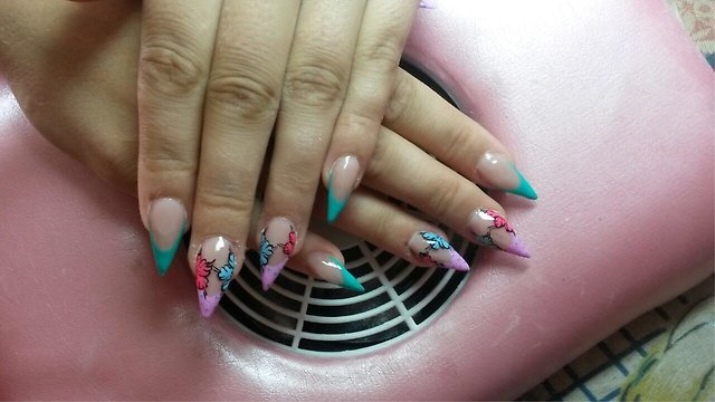
Required Tools
It is not difficult to carry out the gel polish correction procedure with the appropriate equipment and skills even at home.However, do not forget that when you find a workplace at home, you must be sure that all sanitary and hygienic standards are observed, reusable tools must be heat-treated in a dry-heat cabinet, the hands of the master and the client must be treated with an antiseptic solution. To avoid a large amount of dust from the sawn off gel polish, you need to purchase a special desktop vacuum cleaner. To perform corrective work, you will also need:
- Nail files of varying degrees of abrasiveness;
- buff polisher;
- Basic strengthening coating;
- Gel polishes of various colors;
- Finish gel;
- Lint-free wipes;
- Gel polish remover;
- Foil;
- Primer (best acid-free);
- Liquid for removing the dispersion layer;
- UV lamp;
- Machine for processing nails + various cutters for it;
- Dust brush;
- Scissors or tweezers for manicure;
- Pusher or disposable wooden sticks, it is also desirable to have a gel polish corrector with a silicone nozzle;
- Cuticle oil.

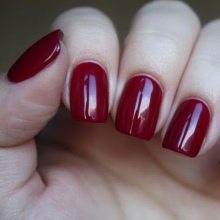
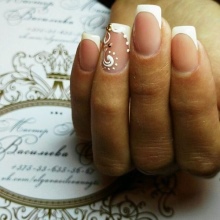
Step-by-step instruction
Now let's figure out how to perform one or another type of manicure adjustment with gel polish. Let's start, perhaps, with a procedure that does not require removal and replacement of the coating:
- Pre-treat your hands with antiseptic. It is very convenient to use the product in the form of a spray;
- With a pusher or wooden stick gently move the cuticle, remove it with scissors, tweezers or an apparatus;
- Give a beautiful shape to the free edge of the nail, make sure that all nails are the same length;
- Take a coarse saw and remove the top (finish) layer of gel polish;
- Moisten a cloth with the dispersion layer remover, remove the resulting dust from the marigold and around it;
- Degrease regrown area;
- For better adhesion of the material to the surface of the nail put a couple of drops of acid-free primer on it;
- Apply gel base, dry it in the lamp;
- Gently apply gel polish to the regrown part, also send to dry in a lamp;
- Now cover the entire nail with gel polish in 2-3 layers, each of which must be dried in ultraviolet light;
- Apply a finish, dry, remove the dispersion layer;
- Treat the cuticle area special nourishing oil.

And now let's take a step-by-step look at the process of performing nail correction with a complete replacement of the coating:
- As in the previous case, first perform hand sanitization using an antiseptic solution;
- Next, take a napkin and cut it into 10 parts, so that you get 10 squares or triangles the size of a fingernail. We soak each of these pieces with gel polish remover, put them on the nails and wrap them in foil. Waiting time - 10 minutes. After this time, carefully unfold the fingers and remove the remnants of the gel polish with a pusher;
- If for any reason you do not want to remove the cover in this way, you can just gently cut it with a manicure machine or a coarse-grained file;
- After removing the gel polish, we do a manicure: push back and cut the cuticle, process the sides of the nail, shape the free edge, align the length;
- Polishing the nails with a buff, shake off the dust with a brush;
- We apply a strengthening base, forming the architecture of the nail plate, we seal the free edge;
- Dry in lamp;
- Apply 2-3 coats of color, each of which must be dried;
- Apply finish gel, dry, remove the sticky layer;
- We process cuticles and the lateral edges of the nail with special nourishing oil.

How to cover overgrown nails
However, not everyone has the time and desire to visit the nail salon too often and adjust the coverage. But regrown nails are no longer pleasing to the eye, places near the cuticle look unaesthetic, and the glossy surface fades over time. I want to fix the situation. There are several life hacks that will help you hide these shortcomings and reach the next correction with decent nails:
- One of the best options, perhaps, would be initially transparent coating with decoration of only the tip of the nail or the execution french manicure with a camouflage base that matches the color of your nail plate as closely as possible. When such a manicure grows, the cuticle area will not be too conspicuous;
- Lunar manicure. The trick is to paint the regrown part of the nail with ordinary varnish, giving this area a beautiful crescent shape. You can also cover this area with transparent nail enamel and fill it with sparkles - it will turn out very modern and fashionable;
- If you often resort to tricks to disguise overgrown nails with applied gel polish, purchase several quality nail polishes in base colors with a dense, uniform coating. With their help, you can completely paint over the existing shade and walk without updating, up to 2 weeks in a row;
- Another interesting option: glue the regrown area near the cuticle with special rhinestones or nail broths. You can fix them with a transparent varnish.

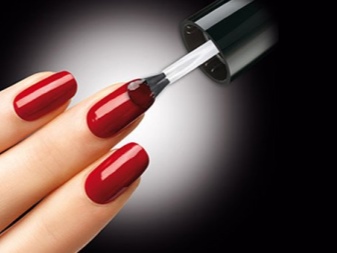
So, we figured out what the correction of a manicure using gel polish is.

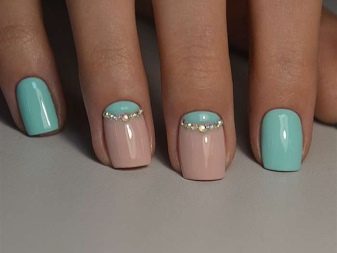
The most important thing that you should remember when carrying out such a procedure is accuracy, attentiveness, sterility of instruments and cleanliness in the workplace. With practice, you can easily improve your technique for performing various types of manicure and learn how to do it quickly and efficiently. Modern materials and tools will make this task easier for you.


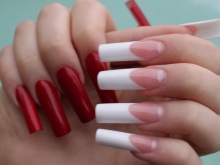
Don't forget to take care of your cuticles. Apply nourishing oil at night, treat your hands with a moisturizer during the day. When doing a manicure, do not try to cut the cuticle as much as possible - you can injure it and cause an infection. Do not press the tools too hard at the base of the nail to avoid injury to the nail plate and the appearance of tuberosity. Make sure that artificial materials (base, finish, gel polish, regular polish) do not get on the cuticle and do not flow to the sides around the nail bed. If this happens, carefully remove the product with a stick before sending it to the curing lamp.
You will learn how to make a gel polish correction in the following video.




























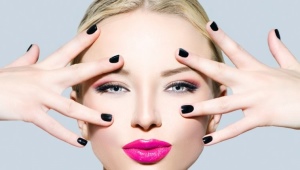
Thanks, I liked it.